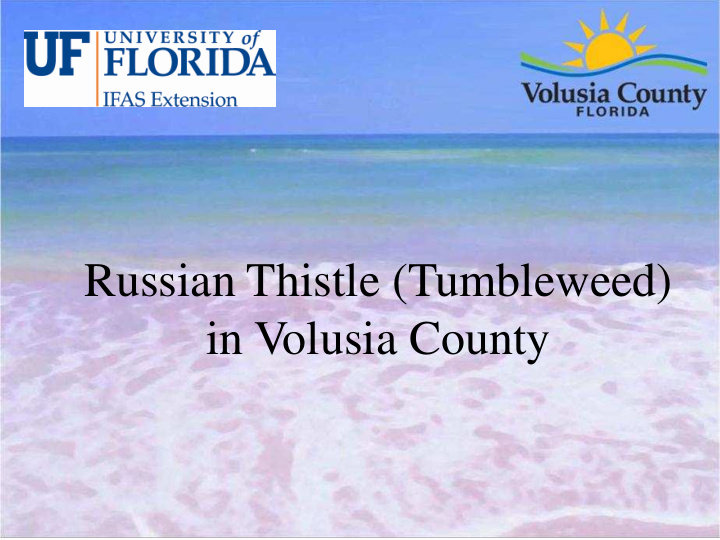



Russian Thistle (Tumbleweed) in Volusia County
Russian Thistle Facts • Scientific name - Salsola kali, Salsola australis, Salsola iberica, Salsola tragus • Native to Russia and western Siberia • Arrived in U.S. in 1873 in South Dakota • Found on disturbed sites • Bushy summer annual • Woody at maturity
Identification • Seedlings – leaves look like pine needles • Stems 8-36 inches at maturity • Stems maybe reddish to purplish • At maturity, leaves are short and sharply pointed • Plant oval to round at maturity • Individual plants can be 18 inches to 6 feet in diameter
Invasive Characteristics • Fall, winter plant breaks off at soil layer • Wind and water roll plant along beach • A large plant may spread 200,000 seed on the beach • Drought and salt tolerant • Very low nutrient requirement • Thorns prevent predation of plant material • Seed can develop taproot in 12 hours • Germination in late winter and early spring
History on Volusia County Beaches • Jennifer Winters, Volusia County Environmental Management, noted the plant in fall 2011 • Summer 2012, found on most area beaches • Makes up 80-100% of beach vegetation in some heavily infested areas
Why Should We Be Concerned? • Displacing native vegetation • Some people exhibit skin rashes and allergic reactions when exposed to Russian thistle • Thorns are very hazardous to children and adults • Turtle hatchlings could become entangled • Potential spread to agricultural and natural areas
Controls • Currently, no biological control • Hand excavating isolated very small plants • Postemergent herbicides labeled for beaches/natural areas
Pre-sprayed Russian Thistle
Pre-sprayed Russian Thistle
Post - Sprayed
Selective Herbicide Application
Selective Herbicide Application
Hand Removal
Hazardous Plant
Distribution
Recommend
More recommend